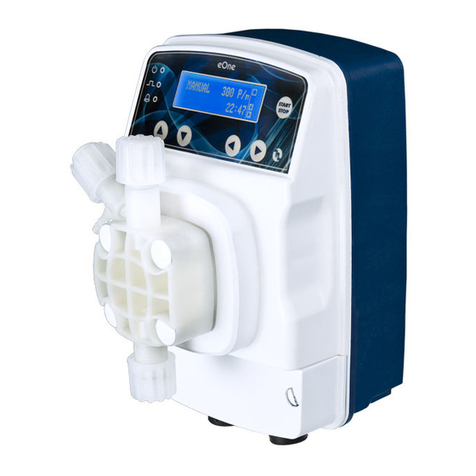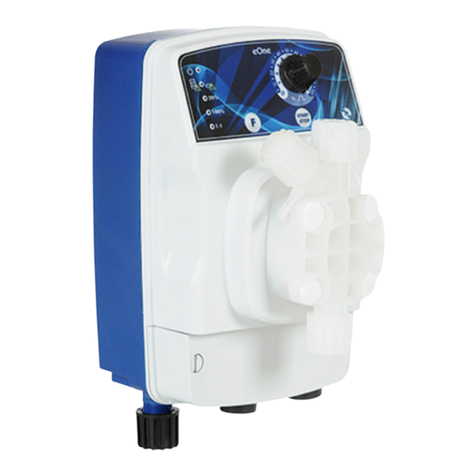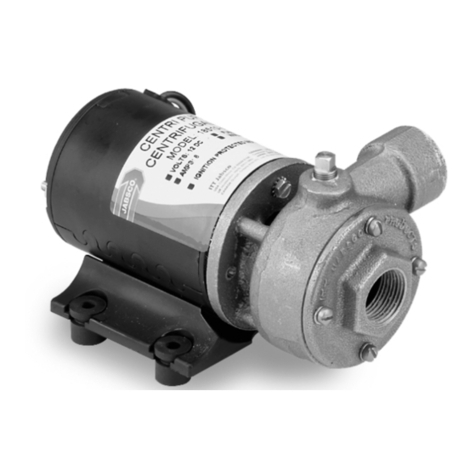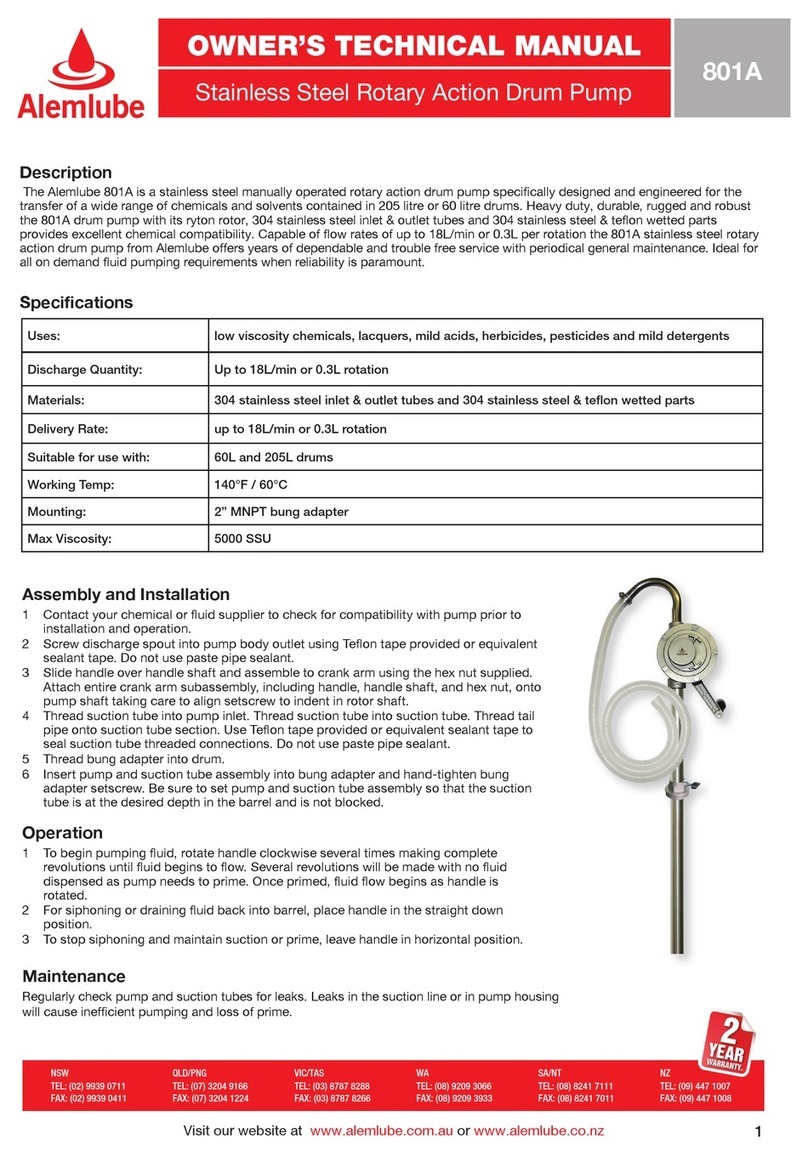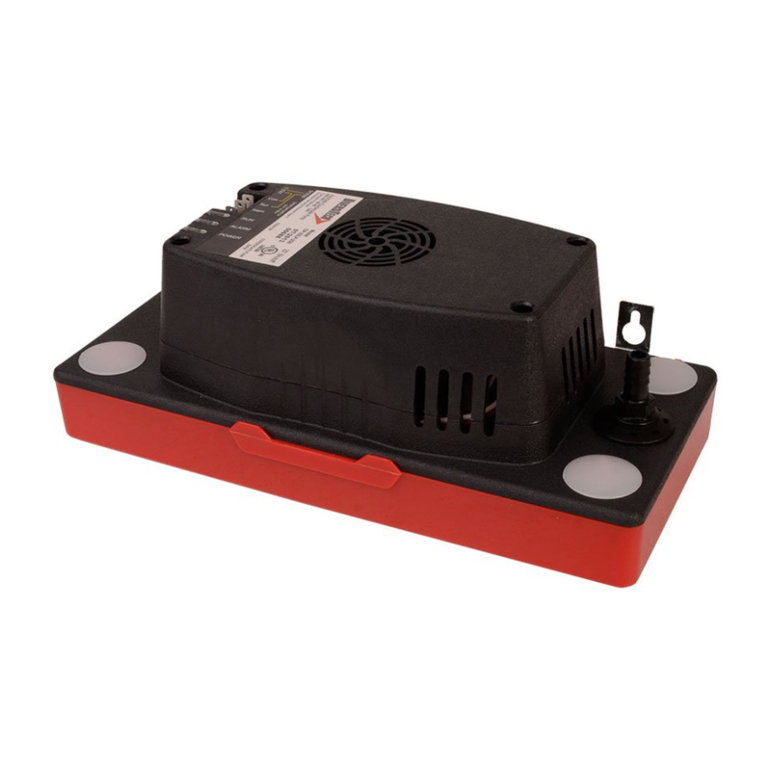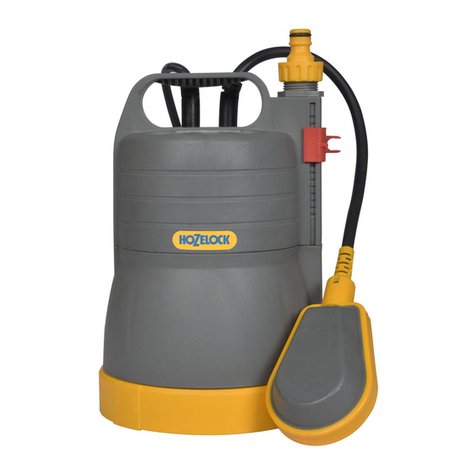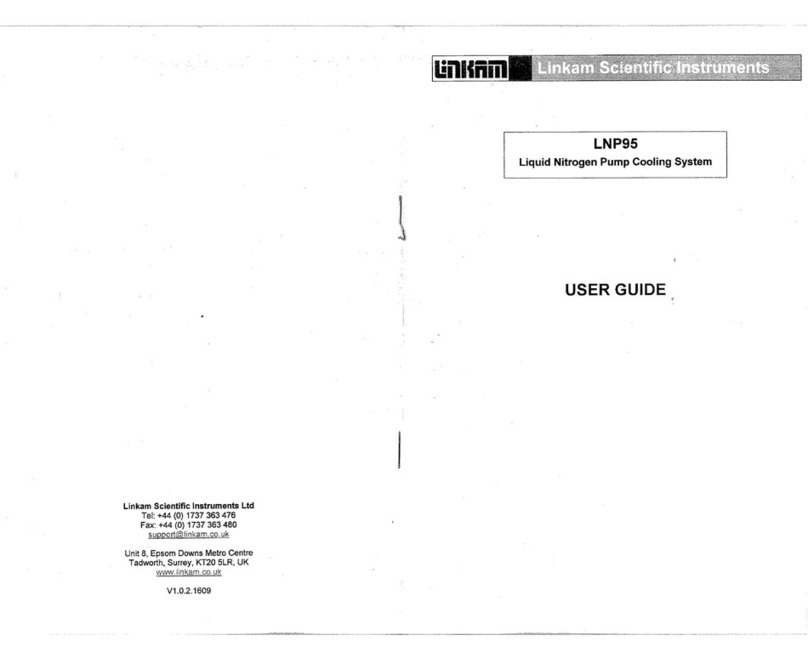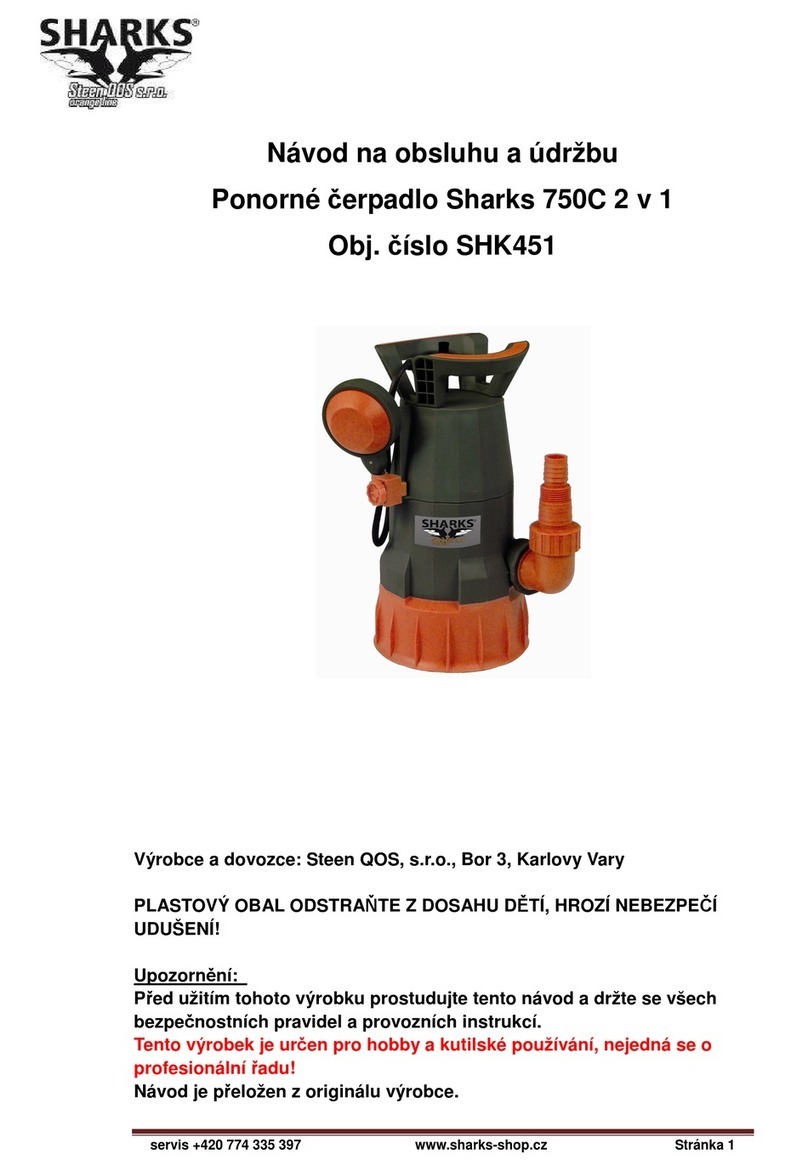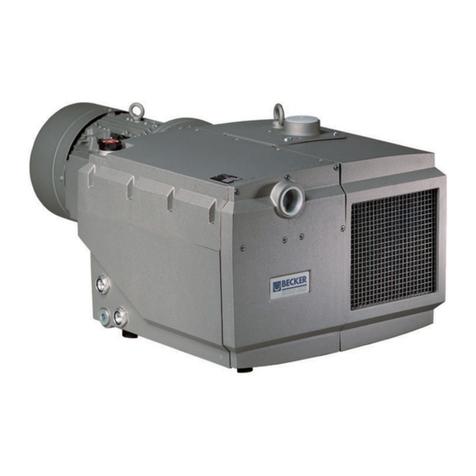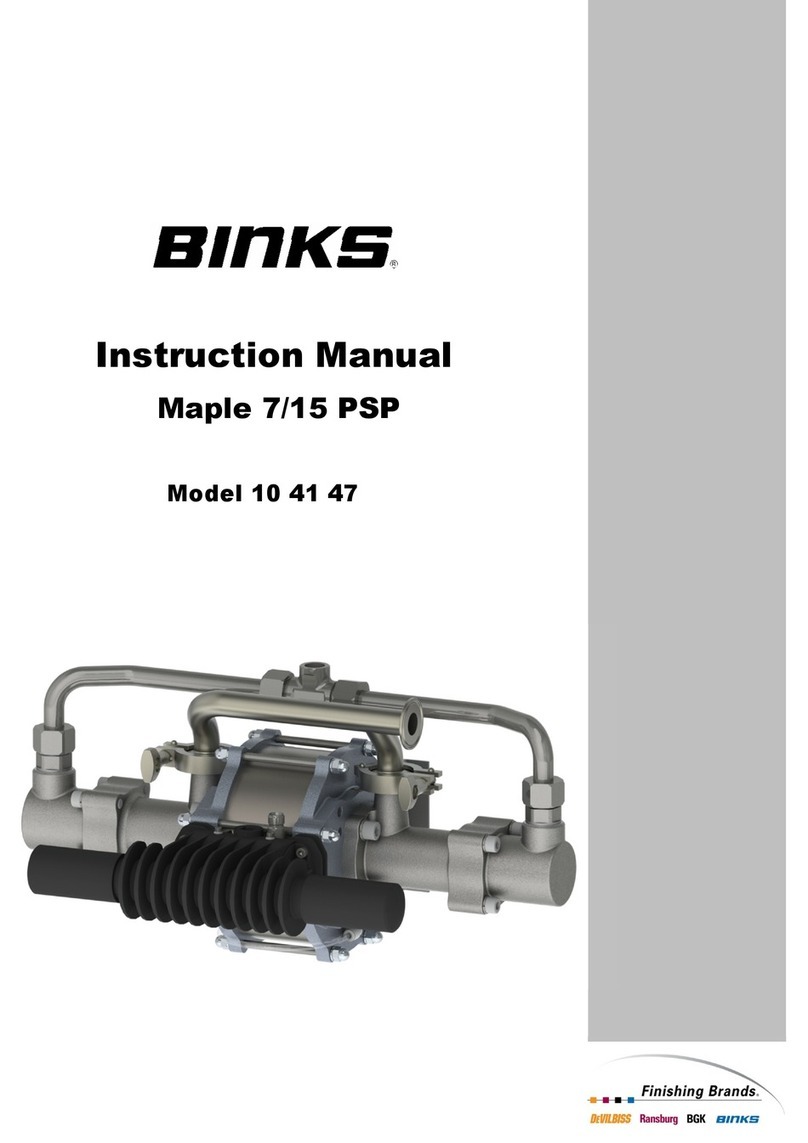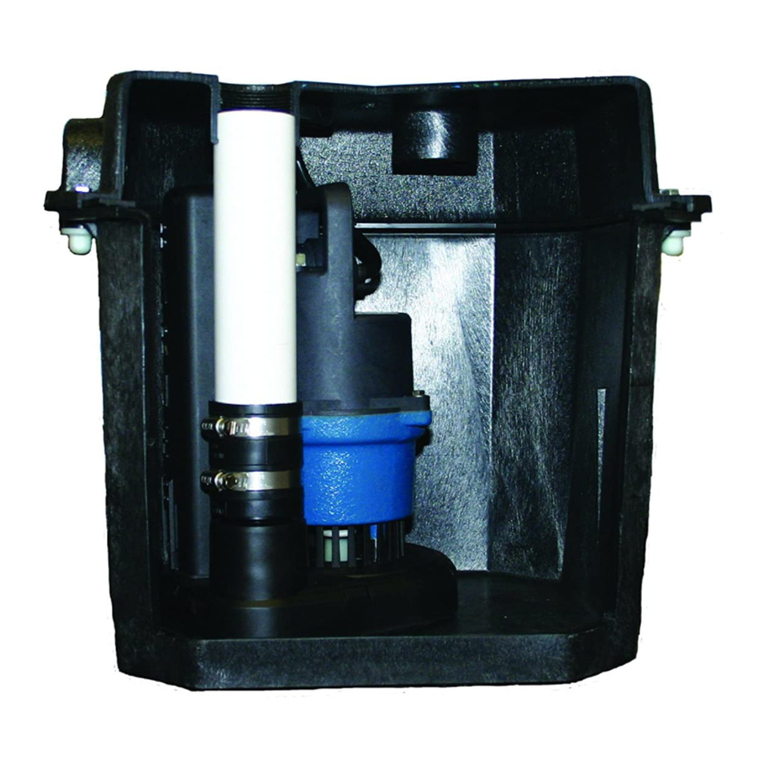
17
20“PTFE” GASKET PACK REPLACEMENT AND ADJUSTMENT
20.1 GASKET PACK REPLACEMENT (head with execution 21)
After the maintenance procedure is complete, proceed as follows:
9Disconnect the pumping head 1from the system
and lantern of the dosing pump.
9Clean the pumping head to ensure the operator can
safely handle the component.
9Loosen the ring nut 11 and remove it.
9Check if piston 2 is worn out. If it is scored or cut,
replacement is recommended. In this case, loosen
the dowels 15.
9Remove the damaged gasket pack 3and place the
new pack into the pumping head paying attention to
the gasket direction.
9Tighten the clamping ring nut 11 till it touches the
gaskets. Do not overtighten.
9Place the pumping head 1on the piston 2, push it
against the lantern, then fix it with screws 4.
20.2 “PTFE” GASKET PACK ADJUSTMENT AND COMPRESSION
▲ATTENTION!
To ensure this type of gaskets is water-tight, it needs adjusting before it can used inside
the head. To carry out the procedure, follow the steps described below.
9Connect the dosing pump to separate pipes that suck
water,and tighten the ring nut one-fourth of a turn to
apply light pressure on the gaskets.
9The upper part of the head will drip.
9Let the pump run for 4/5 hours before tightening the
ring nut again.
9After this time has elapsed, tighten another fourthof a
turn.
9Let the pump run 2 to 3 hours before tightening the
ring nut again; verify if it drips less.
9This tightening and checking procedure must be
carried out till the dripping stops.
9After making sure that the gaskets are fully tight,
connect the dosing pump to the system.
▲ATTENTION!
The gasket pack must be checked and adjusted
regularly. While carrying out the adjustment operations, make sure not to tighten the ring
nut too strongly to avoid damaging the gaskets.
21HEAD WITH SEAL GASKET CLEANING
This type of head is mainly used with products that may SEDIMENT or CRYSTALLISE, which
requires internal parts to be cleaned to avoid sedimentation and cause abrasion to the piston and
gasket pack.
21.1 SEAL GASKET CLEANING
Continuously washing the gaskets helps remove deposits, and prevents the product from hardening
and causing damage to the sealing profile.
Let water flow through the seal gasket area, at a rate of 40/50 l/h, and pressure of 0.5/1 bar.
13 11
4
2 15
PUMPING HEAD
ASSEMBLY DRAWING
























